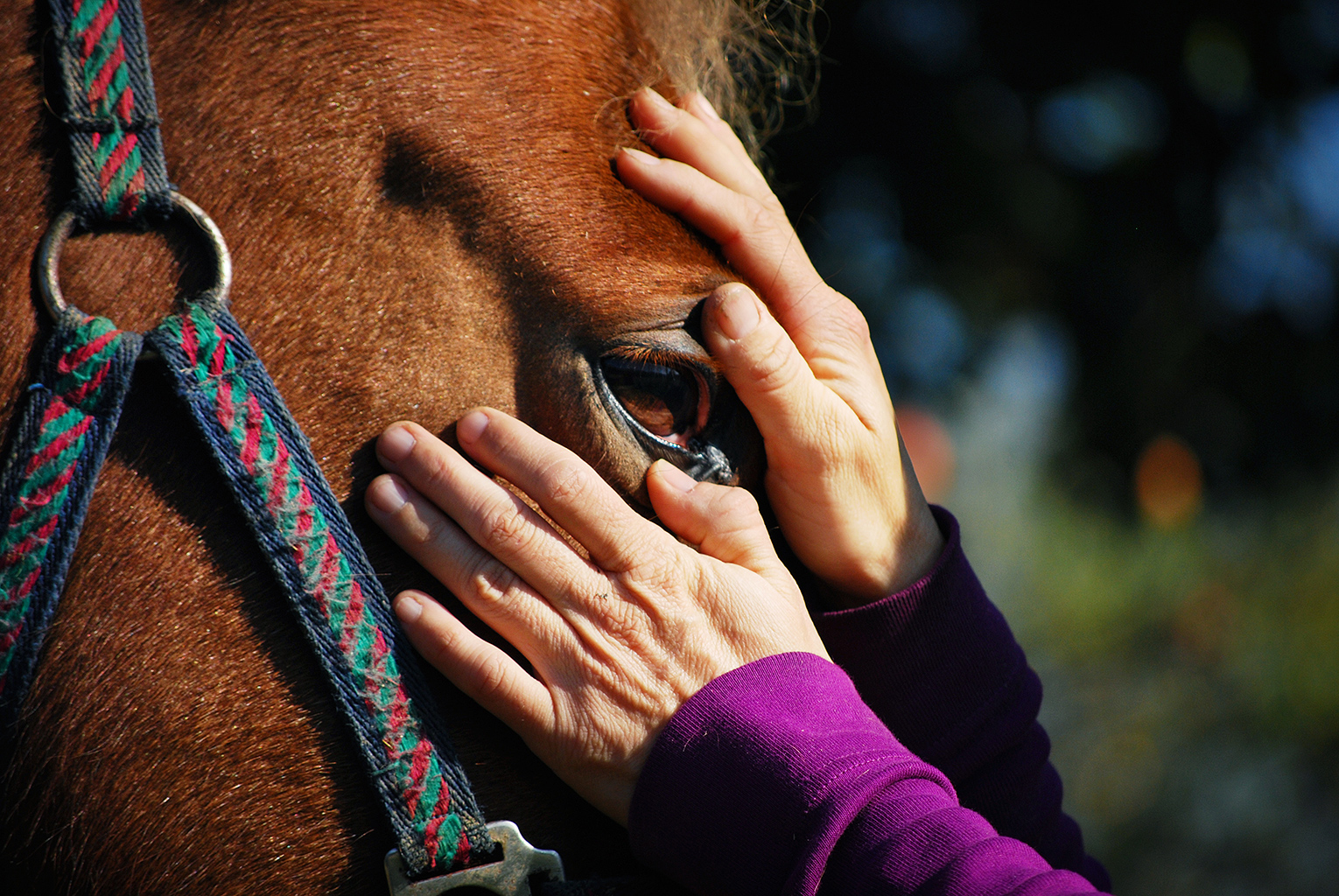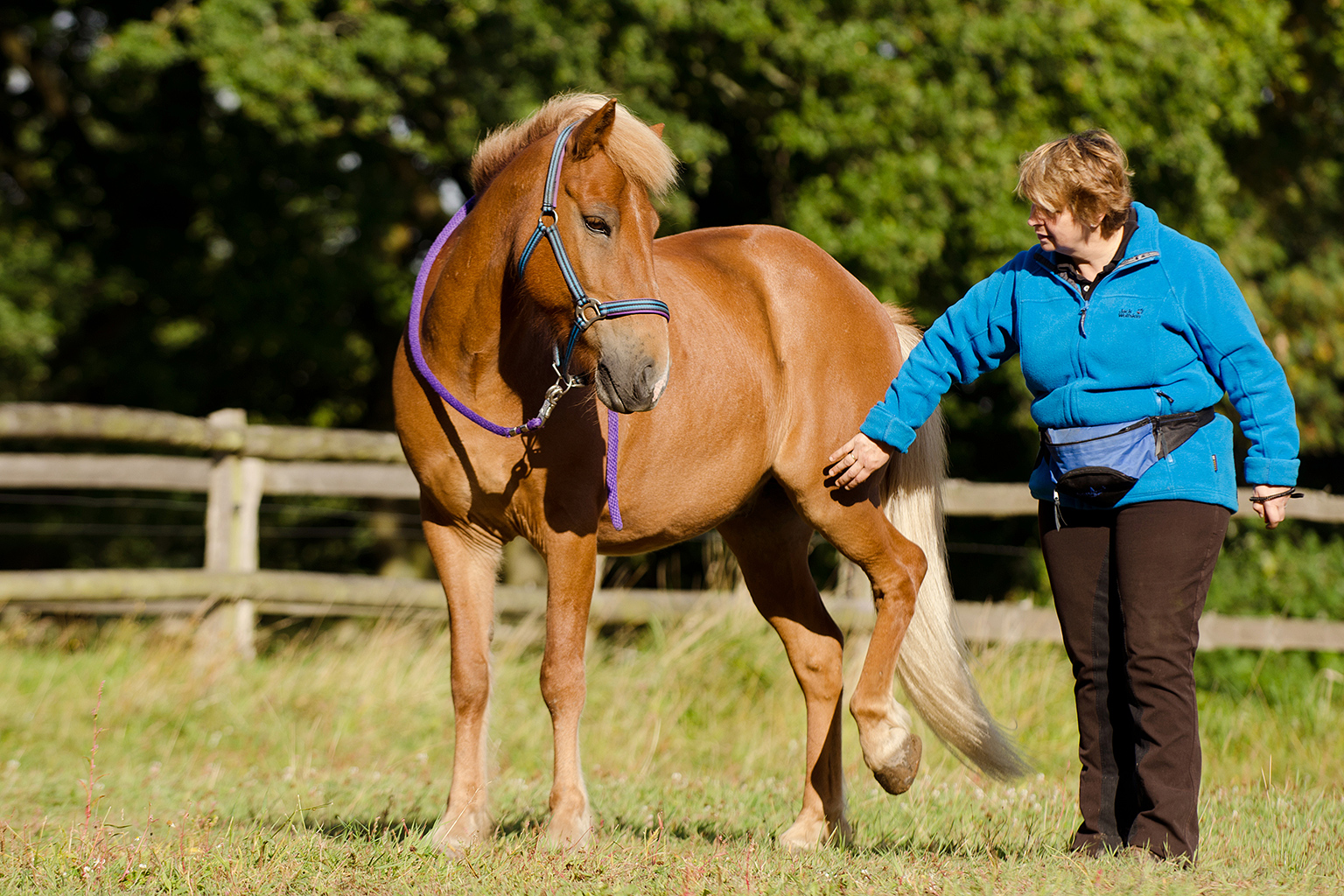Body targets

Use sensibly
It is impressive when horses learn to move a specific body part into a certain direction, or towards a predefined goal. There are innumerable possibilities to teach a horse to actively contribute to the success of a veterinary examination or coat care instead of waiting motionlessly. Especially, when eye drops need to be administered, for example, it facilitates the situation if the horse trustfully puts its head in the human’s hands, and actively seeks body contact. A knee target can help to stabilize the muscles around the knee. Over time, exercises that are similar to our knee bends become possible.
Body consciousness
Body targets train the horse’s body consciousness, and this greatly encourages pinpoint, target-oriented movements. For example, there are areas of the body the horse does not consciously move or is little aware of these movements. This can be, for instance, how the ears are positioned or how the chin area moves. A target exercise can lead to greater perceptive sensitivity in such areas because the body targets focus the horse’s attention on a specific area of its body. Initially, all movements should be practiced as slowly as possible to sharpen the animal’s body sensation as much as possible.
Training body targets – the basic principle
Principally, touching a designated part on a horse’s body is a common way to establish a new body target. For example, we choose a specific position of our hand on the horse’s knee when we establish a knee target. We click and reward our own hand-horse knee-touch a couple of times. Bit by bit, we decrease skin contact by millimeters so that, for example, we only touch the coat very slightly. After waiting for a few seconds, most horses will intuitively “follow”, and seek to reestablish body contact themselves. Then, we click again, and reward the horse. A few repetitions later we begin to put our hand a bit further away from the knee so that a more pronounced upward movement of the knee becomes possible. The key to success in this exercise is to cautiously increase the distance in successive steps.

Bear in mind
The easiest way to introduce a horse to body targets is to choose for the target a part of the horse’s body that it already uses with a great amount of awareness, for example, touching a hand target with the nose, or raising a front leg as if lifting hooves. Only after these easy body targets have been well comprehended a range of new areas of the body can come into focus. But beware and do not go overboard, or you might confuse your horse and make it insecure.
Self-determination
Furthermore, horses are able to consciously decide to participate, or to communicate that they are not in the appropriate emotional state, and would rather avoid the situation. This is an additional advantage of working with body targets, especially in medical training and general horse care. Also, it increases the animal’s degree of self-determination which is really important. Every time a living being is allowed to lead a live with the highest degree of self-determination possible, the perceived quality of life is especially high. Having control over one’s life is a strong reinforcer; it is a key that allows the horse to gain more trust in its environments, in its own self, and in us human beings.
Marlitt Wendt & Conny Ranz


